Why doesn't the washing machine drain the water and what to do?
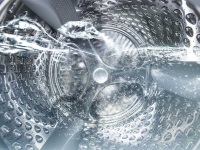
Washing machine in the bath - An indispensable assistant in every home. Regardless of how many family members live in one apartment, nobody washes dirty laundry by hand for a long time already. This responsibility was taken by automatic machines. However, all machines are imperfect. Sooner or later there are breakdowns in it that need to be repaired. Most people turn to experienced professionals for help. However, many breakdowns can also be repaired by yourself. The main thing is to establish their cause. In this article, we will discuss why the washing machine can not drain water and how to eliminate this malfunction.
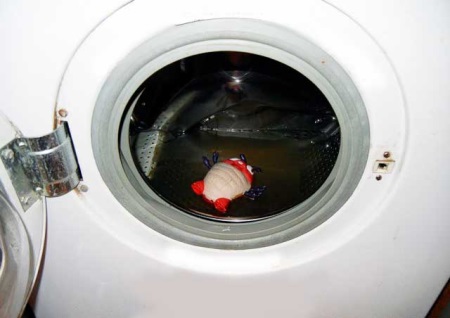
Why does not it drain?
There are many reasons why the water may not drain into the drain. Conventionally, they can be divided into external and internal. External causes of failure can include:
- clogged sewer pipes and siphon;
- clogging of the drain hose and spigot.
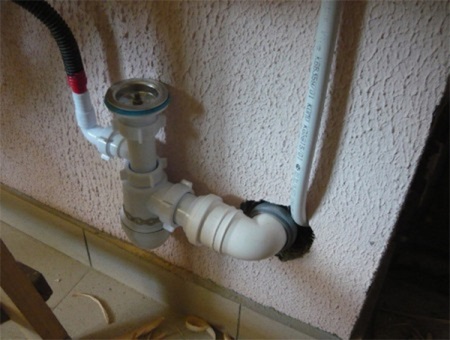
Internal causes of breakdowns include:
- ingress of foreign objects inside the washing machine;
- filter clogging;
- pump breakage;
- Hardware failure caused by improper power supply.
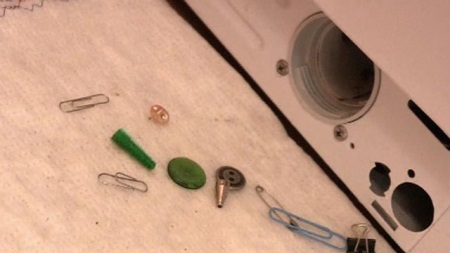
Drain the water yourself
The first thing you will need to do in case of breakage is to drain it.
There are several ways to do this:
- Try draining the water through a special filter, which is usually located at the bottom, on the front of the device. Remove the protective panel and unscrew the filter from the socket. You will need to tilt the machine forward slightly and lock it in a stationary position. Place a basin or other container of sufficient volume to hold all the water under the hole where the water will drain out.
- Use a hose or some kind of tube to drain the water. It will need to be inserted either through the short drain pipe, the outlet of which is behind the filter on the front of the machine, or through the hole for the main drain hose of the machine, located at the back of the washing machine, not too high off the floor.
- If you have a clogged pipe, you will need to clean it, and only then through it to drain the water. To do this you will also first need to remove the filter.
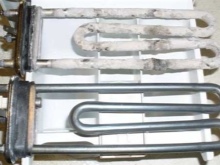
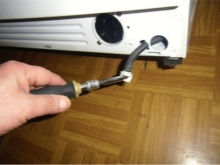
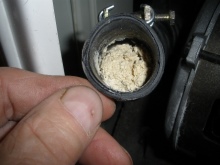
After that you need to conduct a visual inspection of all components of the washing machine, to find the cause of the problem and on its basis act further.
Detecting the causes
First of all, you need to understand what exactly is the cause of the malfunction.
Disconnect the washing machine from the mains to eliminate the risk of electric shock.
- Check the drain hose. Make sure there are no kinks or kinks in it. You may have recently rearranged the room or bought some new furniture, and in the process of installing it, you accidentally jammed the drain hose with something. If the water from the hose does not flow or flows too slowly, this means that there is a clog inside, which must be cleaned. Also, the cause of the malfunction may be that the hose is at the wrong angle to the entrance to the sewer.
- If there are no problems with the hose, the next step is to check the condition of the sewer pipes and the trap. If there is a clog in them, it must also be removed. Most often this is done mechanically with a special cable.
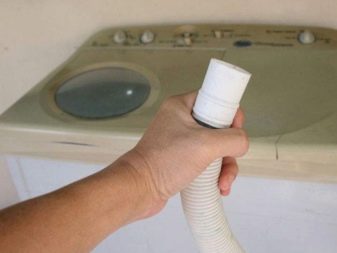
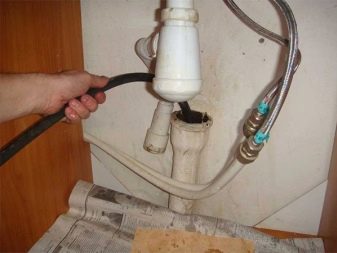
Clogging of the filter
Perhaps this is the most common cause of failure, from which no one is immune. Even if you always carefully shake out all the garbage from the pockets before washing, the filter is still getting small hairs of wool and synthetic fabrics, which gradually accumulate, creating a blockage for the unimpeded passage of water. This problem is solved quite easily. First you will need to get to the filter itself. About its location you can learn from the instructions to the device.
In most cases, it is hidden behind a small round or square insert on the bottom of the front panel of the device. However, in some models of washing machines, to get to the filter, you will need to remove the bottom removable panel, which extends the entire width of the device. As a rule, you can easily remove this panel by hand. But sometimes you will need some thin small object like a screwdriver to pick it up.
The filter itself is screwed into the socket and sealed with a special thick rubber gasket. Since the filter is screwed in pretty tightly, it will take some brute force to unscrew it.
Before unscrewing the filter, make sure that it is not secured with an additional retaining screw. For your convenience, the manufacturers have provided a special handle on the filter, which should be used to unscrew it.
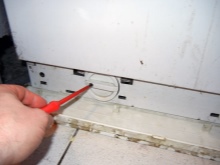
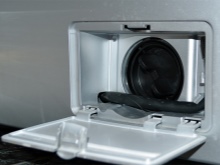
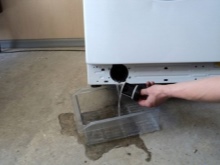
Once the filter is unscrewed, the water will splash on the floor. You should be ready for this and put some container or, at least, put a large rag that will absorb the water.
Once the filter has been removed, it should be cleaned of accumulated debris and reinstalled in its original location. To avoid having to clean the filter every time under extreme conditions, experts recommend a routine cleaning of the filter at least once every four years.
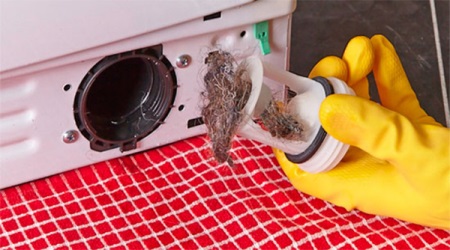
- If you don't find any foreign objects or clogs in the filter, it's most likely the pump. Look into the hole that was formed after removing the filter. There you will see the pump impeller. Try to rotate it from side to side with your hand. If there is something hindering its movement, some thread or a small piece of cloth may be wrapped around it. You can check the pump in another way. Just run the washing mode on the washing machine without water connection and see if the impeller rotates normally. If you can not free it from debris and return it to working condition, you will have to call a master repairman.

Prevention of malfunctions
In order for such breakdowns to occur as rarely as possible, it is necessary to observe simple precautions:
- Carefully select the mode of operation of the machine. Different types of fabric are designed for different washing modes. Just as you should not mix dark, light and colored laundry, do not wash items made of different types of fabric in the same mode. Otherwise you will not achieve optimal washing results.
- Before loading dirty laundry into the washing machine, always check the contents of the pockets carefully. Any foreign objects can cause a breakdown and cause a clog. There is always a lot of debris accumulated in the pockets - various papers, small parts, coins, etc. All of these should be emptied before washing. By making this habit, you'll not only protect your washing machine from possible breakdowns, but you might one day save someone's cell phone, earphones, or Walkman accidentally left in their pocket.
- Use only the proper laundry detergent. There are special detergents sold for automatic washing machines that will extend the life of the appliance, unlike ordinary, cheap powders. Additionally, while washing, you can also use special water softeners, which prevent the formation of limescale on the heating elements of the device.
- Never load more laundry into the washing machine than allowed by the washing machine manual.
- Use a surge protector to connect the washing machine to electricity. There are small voltage fluctuations in almost every home. Modern appliances always take this into account. However, there is a permissible limit above which overvoltage occurs and the equipment can simply burn out. To prevent this, it is always better to use additional protective equipment.
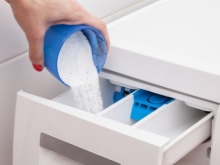
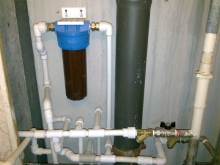
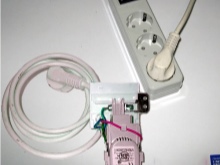
Other possible problems and repair options
There are two more variants of failure, which are also quite common, but you are unlikely to be able to cope with them yourself:
- Pump failure. To determine more precisely what caused it, only a master can look inside the washing machine. The pump will wear out over time. The greater the volume of dirty laundry you wash and the more often you run the washing machine, the more likely it is that the pump will break or wear out. The washing machine pump cannot be repaired. The only option is to replace it with a new one.
- A malfunction in the electronic module of the device, which controls the washing process. The most advanced modern models of washing machines have a special digital screen on the front panel, which displays an error code when a certain fault occurs, and they also have an emergency shutdown system in case of overheating of the board. However, even in simple models, a malfunction in the electronics can occur due to a sudden spike in electricity. In such cases, only an experienced specialist can help you with the repair.
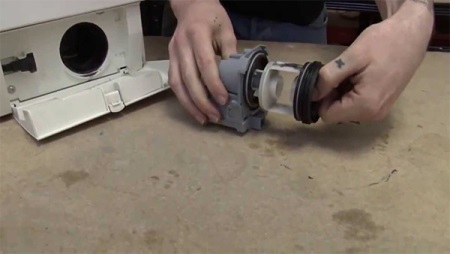





My washing machine does not drain water at all. I hope it's just a clogged filter.